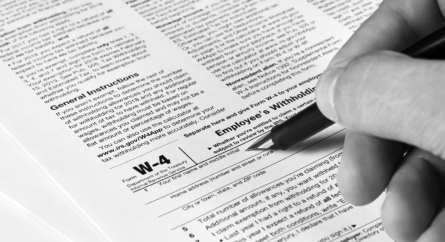Part-Time Employees May Be Eligible for 401(k) Plans
All 401(k) retirement plans have special age and service rules that employees have to meet to become eligible to participate and to vest in employer contributions to those plans. In Notice 2020-68, the IRS explains the new rules that apply following passage of the SECURE Act.
Eligibility to Participate
The old rules, in general, permitted the employer to delay entrance into the plan until the employee reached age 21 or had completed a 12-month period in which she or he worked at least 1,000 hours. Only then were they able to make voluntary salary deferrals. Under the new rules, a 401(k) plan may not require an employee to complete a period of service that is longer than (i) the 12-month period when the employee completes 1,000 hours of service or (ii) a period of three consecutive 12-month periods during each of which the employee completed at least 500 hours of service, so long as the employee has turned age 21 before the end of the third year. The IRS calls these workers “long-term, part-time employees.”
Vesting
Employers are not required to make profit-sharing or matching contributions to long-term, part-time employees. If they choose to, those employees have to be given credit for a year of service for purposes of the plan’s vesting rules for each 12-month period when the employee has completed at least 500 hours of service (note, voluntary salary deferrals are not employer contributions and they are always fully vested).
A Distinction with a Difference
Eligibility
The eligibility rule does not apply to any 12-month period beginning before January1, 2021. That’s right, this rule, which will require employers and 401(k) service providers to keep track of employee hours for another purpose besides compensation and benefits, won’t take effect until the dawn of 2021.
Vesting
In contrast, the special rules governing vesting for long-term, part-time employees apply to all periods of service, including those periods before January 1, 2021. Each 12-month period in which the employee has at least 500 hours of service is included when determining if that employee’s employer contributions are vested. There are some exceptions, the most common is exclusion from years of service before the employee reaches age 18.
What Now?
Employers have no choice about allowing long-term, part-time employees to make contributions to the 401(k) plan. But, they need to be prepared to begin keeping track of the hours of these employees starting on January 1, 2021. Contact both your payroll company and your retirement plan’s service rep. Make sure that they and you are ready when 2021 begins.
As to the vesting piece, an employer’s first decision is whether it will begin making employer matching or nonelective contributions to these LT-PT employees. If you want to assist them with saving for retirement you will need to have your payroll company or your own staff poring over time sheets to see how many of these workers put in 500 hours any year in the past. Each one of these 500-hour years is now a year for your plan’s vesting schedule. All that is different is that any year with 500 hours of service is now a plan year for vesting purposes and you’ll need to go back in time and in the present and future track every LT-PT employee’s annual hours
It might be a pain in the neck for you, their employer, but it is and will be a tangible and valuable benefit for employees in this category.
Categorized: Benefits, Retirement
Tagged In: 401(k), IRS, part-time employee, Retirement Plan, SECURE ACT













